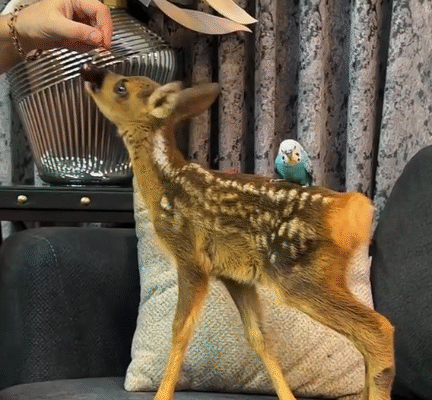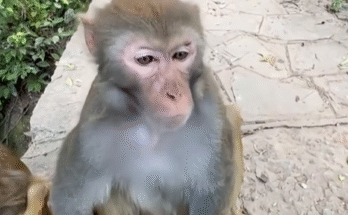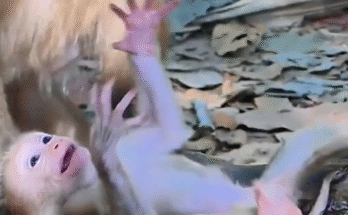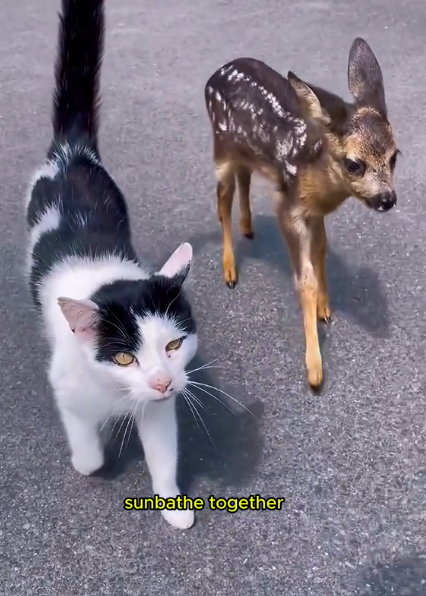
It was a crisp, golden morning in early spring when the Johnson family took their usual weekend walk through the forest trail behind their rural home in Vermont. The tall trees were just beginning to sprout their fresh green leaves, and the air carried the sweet scent of damp earth and blooming wildflowers. Birds chirped, squirrels scurried, and everything felt alive. But what they didn’t expect to find that morning was something so tiny and still that it almost looked like a fallen leaf.
Their eight-year-old daughter, Ellie, was the first to spot it.
“Daddy, look!” she cried, pointing toward a patch of grass just off the path. Nestled in the underbrush was a baby deer—a fawn—no bigger than a medium-sized dog. It lay curled up tightly, its ears flicking slightly, but otherwise motionless. Ellie slowly approached, her boots crunching softly over twigs and leaves.
At first, they thought it might be sleeping. But as Ellie knelt beside it, she noticed the fawn was trembling slightly and its breathing was shallow.
“Where’s its mom?” she asked softly.
Mr. Johnson crouched beside her, examining the area. He scanned the forest edge, expecting to see the mother deer hiding nearby. But after waiting quietly for over an hour, there was no sign of her. No rustle of leaves, no watchful eyes. Just silence.
The fawn hadn’t moved.
“I think it’s been abandoned,” said Mrs. Johnson, her voice filled with concern.
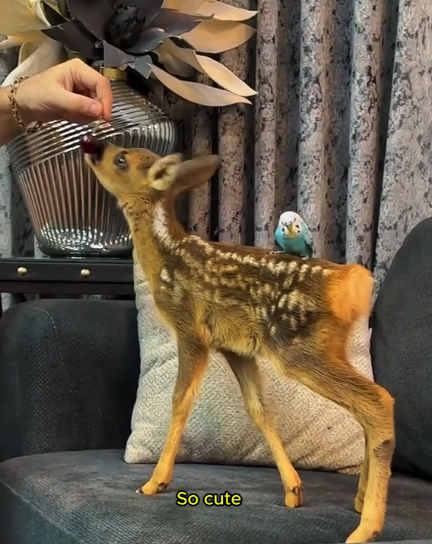
That moment was a turning point. The family debated what to do—should they leave it alone, hoping the mother would come back, or take it with them? But the longer they waited, the more obvious it became that the fawn had been lying there for some time without care or nourishment. Its fragile body was cold to the touch.
Ellie looked up at her parents. “Can we save it?”
Mr. Johnson nodded slowly. “We’ll try.”
Back at their home, they fashioned a cozy nest of blankets inside a large dog crate. Ellie named the fawn “Fern,” because they’d found her hidden among ferns in the woods. The family immediately contacted a local wildlife rehabilitation center for advice. They were told that while it was ideal for wild animals to stay in their natural environment, sometimes intervention was necessary for survival—especially when a baby had clearly been abandoned.
They were given specific instructions: keep Fern warm, feed her with goat’s milk using a bottle, and limit human interaction to avoid too much bonding. The goal was to care for her without domesticating her—so that one day she could be released back into the wild where she belonged.
But Fern had other plans.
From the start, she seemed attached to Ellie. The tiny fawn would bleat softly whenever Ellie left the room and nuzzle her hand for comfort. Ellie, despite being instructed to limit cuddles, couldn’t help but sit by Fern for hours reading books and whispering lullabies. It was a special bond forming—one built on trust, care, and mutual comfort.
As the weeks passed, Fern grew stronger. Her legs, once wobbly, began to steady. She learned to stand, then walk, and soon she was bounding gently around their fenced backyard. The Johnsons built her a small pen with trees, grass, and shelter, giving her space to roam while still being safe.
Neighbors started hearing whispers about the “deer baby” living with the Johnsons. Some raised eyebrows, others showed up with carrots and leafy treats. Fern quickly became a beloved figure in the small community, and Ellie proudly shared stories of her progress at school.
Despite all the love, the Johnsons never lost sight of the goal: helping Fern return to the wild. They slowly began limiting interaction, encouraging more independence. A local wildlife expert visited and agreed that, come summer, it would be safe to release Fern back into the forest near where she had been found.
Ellie was heartbroken.
“She’s like family now,” she whispered tearfully one night, watching Fern sleep under the stars in her pen.
“I know,” said her mom gently. “But remember, her true family is in the woods. That’s where she’ll be happiest.”
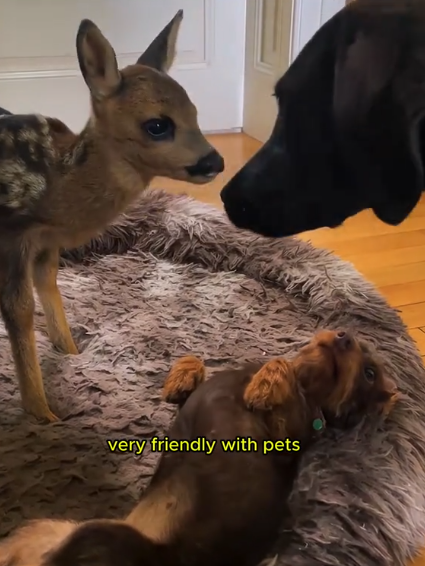
Release day came quietly. There was no big goodbye. Just a morning walk back to the same trail where they had found her. Ellie carried a basket with Fern’s favorite treats—apple slices, clover, and a few acorns.
The gate was opened, and Fern hesitated only briefly. She looked back at Ellie once, blinked her soft brown eyes, and then turned, gracefully leaping into the forest.
The Johnsons watched until she disappeared among the trees.
They walked home in silence, a mixture of pride and sadness in their hearts.
Months passed. Autumn arrived with its red and gold leaves, and the forest became quiet once again. Ellie still walked the trail with her parents, always hoping to catch a glimpse of Fern.
One day, just as they were about to turn back, a flicker of movement caught Ellie’s eye. There, in the same patch of ferns, stood a young deer. Sleek, strong, and poised. And just behind her, a tiny fawn—this time not abandoned, but following close, learning to walk on shaky legs.
“It’s her,” Ellie whispered, her eyes shining.
Fern gave a small nod—almost like a thank you—and then disappeared with her own baby into the woods.
The Johnsons never saw Fern again after that, but they didn’t need to. They had saved a life and watched it bloom. Ellie had learned one of life’s most beautiful lessons: that love doesn’t mean holding on forever—sometimes, it means letting go.
And somewhere deep in the forest, Fern thrived. A living reminder that compassion, even the smallest act, could change a life forever.
